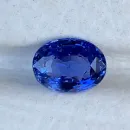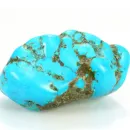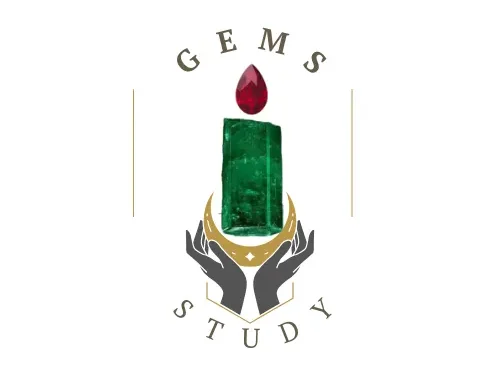Gemstone Formation:
For centuries, not just for their aesthetic appeal but also for their scarcity, gemstones have drawn the magnetic power of human fascination. Priced pieces in jewelry stores, they exist as a kind of alchemy in Earth science itinerant minerals made magnificent by nature’s hand and a few human alterations from the depths of the Earth. But how, exactly, does nature work these wonders? What natural processes lead to the appearance of these minerals at Earth’s surface, and what ancient geology gives rise to modern gemology? This article accompanies the reader on a journey from the geological origins of gemstones to their commercial value.
What Are Gemstones?
Gemstones are minerals or organic materials that occur naturally and are cut, polished, and placed in jewelry and decorative arts. They are held in high regard for the rarity, durability, and beauty they ostensibly possess. Gemstone value is determined primarily at this point by a stone’s color, clarity, size, and cut. But over the time, through extreme changes in heat and pressure, these stones’ ultimate beauty arose.
What is the gemstone formation process?
Gemstone formation is a complex process that happens deep within the Earth and in the most intimate layers of its crust. Orchestrated by nature over millions of years, this amazing spectacle of mineral evolution can be seen in the world’s geological wonders. The compositions of gemstones can vary greatly, and so can the formation processes by which they came to be. Here are five methods by which some of the most well-known gemstones are formed:
1. Formation of Igneous
When molten magma cools and solidifies, it forms igneous gemstones. Slow cooling of magma allows crystals to develop, and we find igneous gemstones deep within the Earth’s crust or in volcanic pipes. They include diamonds and garnets.
2. Formation of Metamorphic Gems
Metamorphic gems are created under the most severe conditions—intense heat and incredible pressure. These things do not happen overnight. For metamorphic gems like sapphire, ruby, and emerald to form, the Earth must have been working for millions of years. The intense heat and pressure cause not just change but physical, chemical, and crystalline perfection. Tectonic plate movements bring these gems to your local jeweler.
3. Formation of Sedimentary Gemstones
Gemstones of a sedimentary origin form from minerals that are transported by water and deposited in layers. Over eons, these minerals crystallize into gemstones like the opals and turquoises.
4. Hydrothermal Formation
Gemstones that are formed under hydrothermal conditions are created from superheated, mineral-rich water that enters fissures and voids in the Earth’s crust. When this water cools, minerals can crystallize into a variety of gemstones such as quartz and amethyst. Formation Scene Crystal growing apparatus for quartz.
5. Formation from Living Organisms
Some gemstones, such as amber and pearl, form through biological processes. Amber is fossilized tree resin, while pearls come from mollusks in response to irritants.
Table of Gemstones and Formation Process
| Gemstone | Formation Process | Images |
|---|---|---|
| Diamond | Igneous |  |
| Ruby | Metamorphic |  |
| Sapphire | Metamorphic |  |
| Emerald | Metamorphic |  |
| Amethyst | Hydrothermal |  |
| Opal | Sedimentary |  |
| Turquoise | Sedimentary |  |
| Garnet | Igneous |  |
| Amber | Organic |  |
| Pearl | Organic |  |
What Makes Gemstones Valuable?
The value of a gemstone depends on several factors:
- Rarity: The rarer the gemstone, the higher its value.
- Color: Vivid, saturated colors are more desirable.
- Clarity: Fewer inclusions or flaws increase the gemstone’s value.
- Carat Weight: Larger gemstones are generally more valuable.
- Cut: A well-cut gemstone enhances its brilliance and overall appeal.
The Journey from Mine to Market
- Mining: Gemstones are extracted through mining operations, which can be open-pit, underground, or alluvial mining.
- Sorting and Grading: Raw gemstones are sorted and graded based on their quality.
- Cutting and Polishing: Skilled artisans cut and polish gemstones to maximize their beauty.
- Certification: High-quality gemstones are certified by gemological laboratories.
- Retail: Certified gemstones are sold to jewelers and consumers worldwide.
Ethical and Sustainable Mining Practices
In the past few years, there has been an escalating demand for gemstones that are sourced ethically. When it comes to mining practices, ethical is the key word for the burgeoning gemstone industry. Dame Margaret Anstey. Who was a director at the United Nations, spent more than 30 years studying the Kimberley Process, which was set up in 2003 by the UN to track diamonds from mine to market? Anstey said, “More than 50% of diamonds on the market are not certified. Of those that are, 75% are fairytale diamonds.
Conclusion
Gemstones are beautiful accessories but remarkable products of geology that span millions of years. From their formation deep within the Earth’s crust to their journey into jewelry stores, each gemstone tells a unique story. The science behind gemstone formation is better understood now than ever, and that knowledge makes us better appreciate these natural wonders. It also promotes the ethical and sustainable practices that increasingly characterize the jewelry industry.

